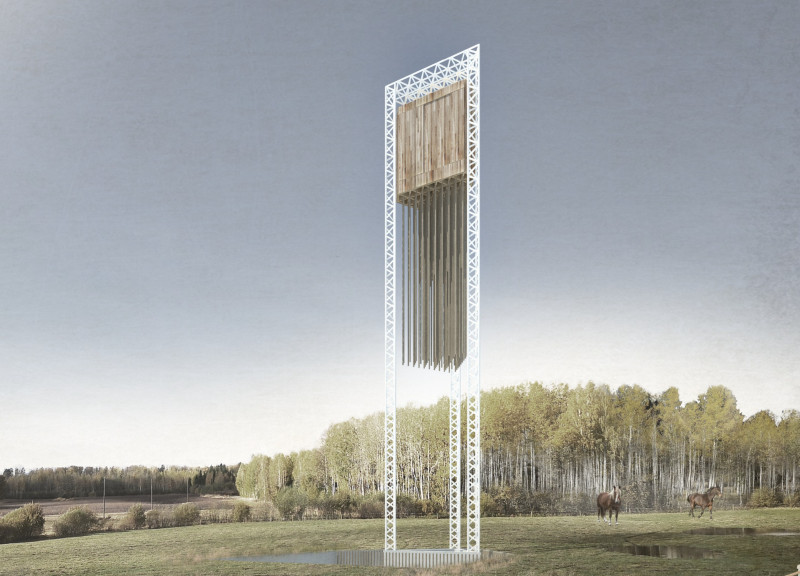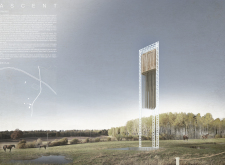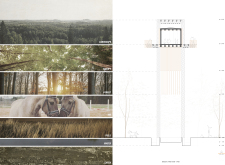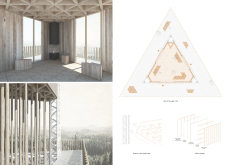5 key facts about this project
The ASCENT project integrates with its natural environment and encourages visitors to connect with the landscape. Located in a forest filled with birch trees, the building serves as both an observation point and a reflective space. The design centers on the concept of mimesis, allowing the structure to blend with its surroundings and enhance the experience of the site.
Design Concept
At its core, the ASCENT illustrates the idea of mimesis, where the architecture mirrors the features of the natural world. A prominent tower rises among the trees, designed to complement rather than overshadow the landscape. The structure is painted a light white, which helps it merge with the environment and allows the forest to take center stage while still providing visitors with an enriching visual experience.
Elevated Platform
The structure features a metallic platform that lifts visitors above the ground. This design choice provides a unique way to access different areas of the building. It connects users to a wooden cabin, creating a relationship that feels both close and detached. This elevation offers a fresh perspective on the beautifully crafted wooden elements within the structure and encourages an appreciation for the surrounding landscape.
Dynamic Movement
Visitors navigate through varying heights as they explore the design, creating a journey that deepens their connection to nature. Each change in elevation provides different views, inviting a range of emotions and experiences. The platform includes a series of stops that frame scenic moments in the landscape, allowing visitors to notice subtleties in their surroundings while moving through the built environment.
Self-Building Process
The ASCENT also features a self-building process that reflects how trees grow in nature. The structure develops layer by layer, without the need for cranes or external supports. This approach highlights a commitment to sustainable practices, demonstrating a forward-thinking attitude toward architecture and its relationship with the environment.
The sunlight filtering through the wooden elements creates patterns of light and shadow, drawing attention to the craftsmanship and inviting visitors to contemplate both the artistry and the material used in the design.






















































